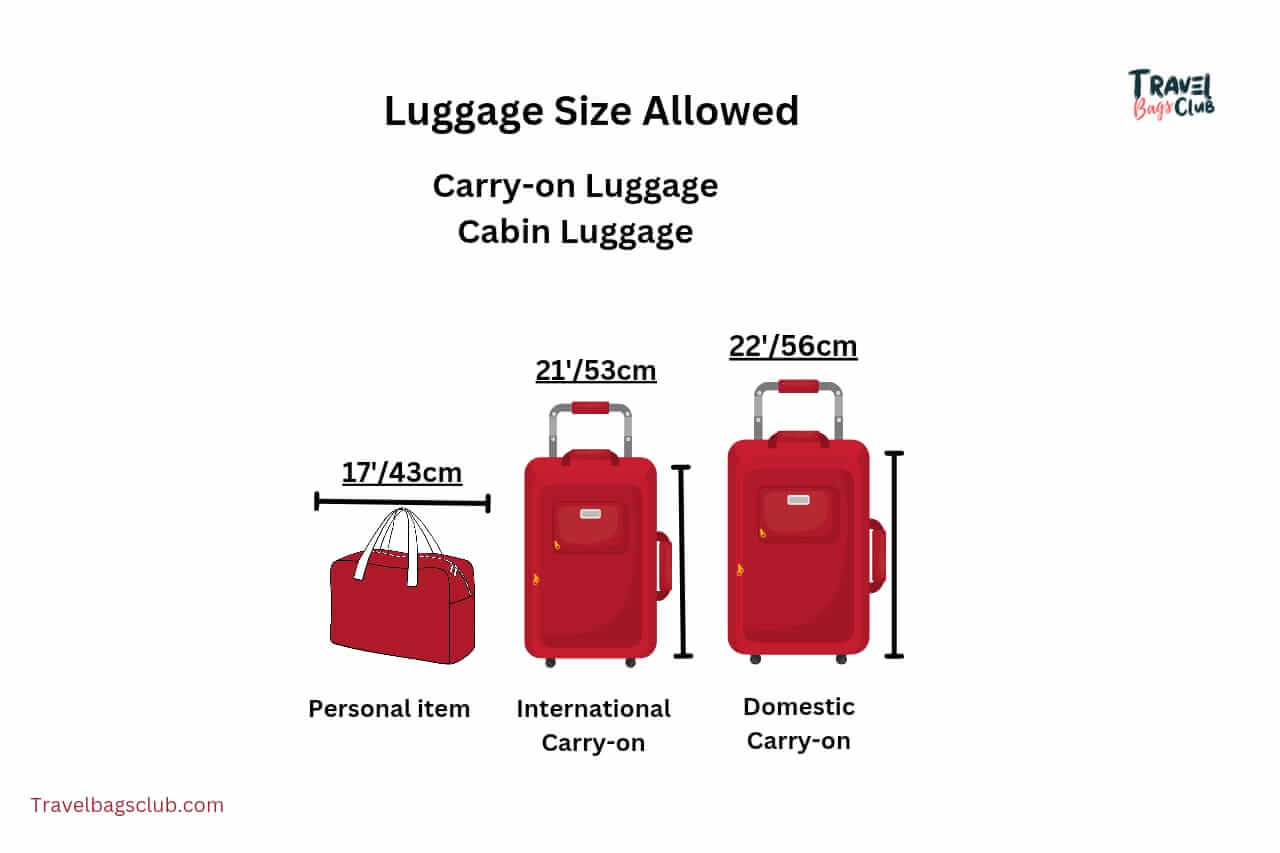If your vocations come and you want to travel, you’ve probably wondered what size carry-on luggage is. Luckily, there are some simple guidelines to follow. But before we get into that, let’s first talk about why you might want to consider carrying your luggage in the first place.
Carrying on your luggage allows you to avoid checked baggage fees, saving you a lot of money if you travel frequently. It also means that your belongings will never be out of sight, giving you peace of mind. And if your trip is delayed or canceled, you won’t have to worry about waiting for your luggage to arrive. It will already be with you!
So now that we know the benefits of carrying our luggage, let’s talk about what size is allowed. The general rule is that your carry-on bag should be no larger than 22″ x 14″ x 9″. This includes all handles and wheels, so make sure to measure carefully.
The average carry-on luggage Size
Airlines may have different rules on the size of carry-on bags, but most of them have the same limitations. When including wheels and handles, carry-on luggage should measure 22 inches by 14 inches by 9 inches.

It’s wise to confirm any limits with your airline before your trip as some may have different policies. For instance, some low-cost airlines can have fewer size restrictions, so it’s essential to check before you book your flight.
What is the carry-on luggage weight restriction?
Regarding some of the major domestic carriers, Delta and JetBlue, carry-on bags have no weight limits. As long as you can hoist your bag into the overhead compartment without assistance from an airline staff member, you’re good to go!
In most cases, airlines won’t weigh your carry-on bags as long as they appear balanced. However, the weight of a bag is essential for small commuter planes due to safety regulations.
Even if an airline does list a specific pound or kilogram limit on their website – it only serves as an indication and not necessarily what you should stick with when packing your luggage.
Types of Carry-On Luggage
There are different types of carry-on luggage available, including:
- Backpacks
- Duffel bags
- Rolling Luggage
- Wheeled backpacks
- Carry-on garment bags
Each type of carry-on luggage has its pros and cons, and it’s essential to choose the right type for your needs. For example, if you’re traveling for business, a carry-on garment bag may be more suitable for your needs.
What may I put in my carry-on bag?
As you pack your carry-on luggage, remember to adhere to the regulations on what can and cannot be included. Prohibited items include firearms, lithium batteries, and other hazardous materials. Much like those that are not allowed when packing checked bags.
Additionally, ensure no more than 3 ounces of liquids are in each container. As this will significantly decrease any difficulties at security checkpoints.
Before starting your journey, it’s essential to keep in mind that only containers of liquid, paste, aerosol gel, or cream smaller than 3.4 ounces are allowed through security checkpoints. Additionally, please ensure that all applicable rules and regulations for your particular carrier are met to avoid having any items confiscated at the gate.
Airlines have different size requirements for carry-on luggage
Got a carry-on that’s pushing the size limit? Don’t sweat it – some airlines have different size restrictions. Other airlines may be more lenient on your bag’s total length, width, and height, allowing you to bring something slightly more significant than what standard dimensions usually dictate.
Keep an eye out for airline policies or baggage regulations. It’s worth a look before heading to the check-in desk!
You can usually find the dimensions of your carry-on luggage on the airline’s website
Have you ever thought about how challenging it is to estimate the size of your carry-on luggage? Well, thank goodness for technology.
Nowadays, all you have to do is head to the airline’s website, where the dimensions will usually be listed.
So don’t worry if that suitcase you bought will fit – check it out online and avoid surprises when you get to the airport. Now that’s one problem less to be worried about when traveling!
Conclusion
The size of your carry-on luggage is important when traveling, and it’s crucial to have the right information to make the right decision. Always check with your airline before you travel to ensure your bag meets the airline’s size restrictions.
By choosing the right type of carry-on luggage, packing efficiently, and following the airline’s guidelines, you can make the most of your carry-on luggage and have a stress-free travel experience.
FAQs
What kind of luggage counts as a carry-on?
There are no standards for carry-on bags, and each airline sets its limits on size and weight. The most typical maximum size for carry-on luggage is 56 x 36 x 23 cm (22 x 14 x 9 inches).
Is a backpack a carry-on item?
If a bag fits within the airline’s maximum size guidelines, it would be considered a carry-on item. Most airlines allow a normal carry-on piece to be larger and a personal item to be significantly smaller.
Can I bring a 24-inch suitcase on board?
Some airlines, but not all, would consider a 24-inch suitcase to be a carry-on. Some airlines allow the maximum linear dimension; thus, this would be OK if your other two measurements were less to accommodate the 24-inch length. However, a suitcase with the following dimensions is the most usually accepted: 22 x 14 x 9 inches.


9 thoughts on “What Size Is Carry-On Luggage”